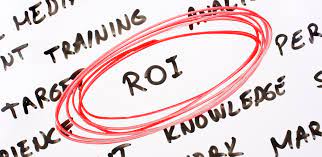Harmony at Work: Turning Conflicts into Opportunities for Growth
I enjoy attending live music venues. Each gifted musician playing their instrument in harmony with others. When the orchestra is in harmony, they produce something much greater than any musician could. At a recent concert, it hit me…what if the senior leadership teams I am helping to scale their businesses focused even more on harmony? What if every department leader and their team delivered their area of expertise in harmony with other departments and not in conflict? If conflict occurs…what if we spent more time training leaders to handle conflict professionally?
Conflict is as natural as the changing of the seasons. But just like every season has its purpose, conflict can bring about growth and transformation when approached with understanding and skill. This is especially true in the workplace, where differing opinions, backgrounds, and goals can easily lead to disputes. Let’s delve into the significance of effective conflict resolution and how, with the right mindset, conflicts can become valuable growth opportunities.
Common Sources of Workplace Conflicts
- Communication breakdowns.
Nothing fuels misunderstandings like poor communication. When instructions are unclear or feedback isn’t communicated effectively, it can result in frustration and confusion.
- Differences in values or perspectives.
Imagine two colleagues: one values punctuality and strict adherence to deadlines, while the other values flexibility and creativity. Without mutual respect and understanding, such differences can escalate into conflicts.
- Competition over resources or recognition.
Two teams vying for the same limited resources or individuals seeking acknowledgment for their contributions can lead to strain and rivalry.
- Varying work styles or habits.
Some people need silence to concentrate; others thrive in a bustling environment. These divergent work habits can be sources of friction if not acknowledged and addressed. With the post pandemic work from home model we are seeing even more conflict and lack of communication.
- Personality clashes.
Let’s face it: sometimes, we don’t gel with certain people. Without the skills to navigate personality differences, they can lead to persistent conflicts.
One technique that has served several clients is having everyone complete their DISC assessment. We provide training on how to read their assessment and, more importantly, how to read the styles of others and adapt to what the other person needs. We have seen huge breakthroughs on teams who had their leaders complete and share their DISC profiles and openly discuss how they prefer to communicate. Some of my teams post a DISC WHeel in their lunchrooms with all team members’ dominant style identified so if they are going to meet with someone, they can quickly consider how to plan that conversation.
Steps to Effective Conflict Resolution
Conflicts are an inevitable part of human interaction. The difference between a healthy workplace and a toxic one often lies not in the absence of conflicts but in how they are addressed. We need leadership teams playing in harmony to scale revenue, profits, and shareholder value. Here’s a deeper dive into the steps that lead to effective conflict resolution:
- Acknowledge the Conflict
Recognizing there is an issue – Just like how the first step to solving a problem is admitting you have one, recognizing there’s a conflict is vital. Whether it’s a noticeable tension in the room or a voiced concern, pinpointing the issue is crucial.
Accepting its importance to all parties involved – Every person’s feeling and perspective are valid. Remember what they are feeling is true to them. For some, what might seem like a minor issue can be a major concern. Understanding and accepting this is central to the resolution process.
As we work with teams, we have several exercises to help unresolved conflict rise to the surface. Sadly, in many cases, unresolved conflicts have been present for years, negatively impacting the team’s performance and harmony of their results.
- Understand the Conflict
Listening actively – Active listening goes beyond hearing words. It involves fully concentrating, understanding, and responding to the sentiments behind those words. It requires full attention and the ability to interpret non-verbal cues like body language.
Seeking to comprehend different viewpoints – Every story has multiple sides. Understanding each perspective helps find a middle ground and builds trust among the parties involved.
When working with a senior leadership team, a trained coach and facilitator can lead the discussion to help understand the conflict and both parties’ views are shared. Then, we would like to facilitate discussion and resolution.
One of the instruments we often use to help uncover a lack of trust and unresolved conflict is the 5 Dysfunctions of a team exercise. Building a team that consistently delivers and is accountable requires a foundation of trust and resolving conflicts, impeding productivity.
What are common conflicts we see?
- Sales and Marketing over lead quality and quantity
- Product Management and Marketing
- CFO and CRO due to poor, inaccurate revenue forecasts
- Operations and Sales, friction due to on-time shipments, but operations did not have accurate forecasts
- CEO and CRO
- Tope performing Salesperson and Customer Service
- Product Management and Sales, sales not letting product management interview customers
- Purchasing and operations, particularly since we have seen supply chain challenges
- Sales Managers and Salespeople
- Product Design and Product Management
Having helped teams drive explosive growth for over 35 years, I could keep listing the internal conflicts I have seen and needed to help teams resolve and get back in harmony to scale their businesses.
What Conflicts is your team experiencing today?
- Open Communication Channels
Promoting a safe environment for dialogue – Conversations about conflicts can be emotionally charged. Have any of your team members stopped talking? Ensuring a safe space, where each party feels they can voice their concerns without fear of retribution is essential.
Using “I” statements to avoid blame – Phrases like “You always” or “You never” can make individuals defensive. On the other hand, “I feel” or “I believe” frames the conversation around personal feelings and perceptions, fostering a non-confrontational dialogue.
Stop leading with “why” questions that put the other person on the defensive, and start using “How” and “what” questions.
We must create environments of psychological safety where teams openly share conflicting views and resolve conflicts. Teams that fail to talk about conflicts are like hearing a performance, but one of the musicians is off-tune.
- Find Common Ground
Identifying shared goals or values – There’s always some common ground, no matter how vast the differences. It could be a shared goal, a mutual acquaintance, or a common hobby. This is why we spend 2 days each year developing and refining the strategic plan. A plan that shares what we plan to do and or team why. Highlighting these similarities can act as a bridge over turbulent waters.
Recognizing mutual concerns – Sometimes, both parties might have shared worries leading to the conflict. Recognizing these can pave the way for collaborative problem-solving.
One common ground our clients have is our one-page business plan and the key activities we agreed on as a team we must execute.
Another is defining a performance based culture focused on serving our customers inside and in the marketplace.
Again, we have other team-building exercises to help team members who feel their opinions are worlds apart find common ground to start building a resolution.
- Develop Solution Strategies
Brainstorming collaboratively – Instead of a ‘me versus you’ approach, encourage a ‘us against the problem’ mindset. Joint brainstorming sessions can lead to innovative solutions that cater to everyone’s concerns.
Here, we facilitate conversations about topics that impact our teams’ results. We encourage the open discussion of constraints and bring all those politically incorrect secrets into the light of day. We focus on resolving problems and not attacking people or departments.
Evaluating potential solutions together – Once multiple solutions are on the table, weigh their pros and cons. This not only ensures transparency but also collective ownership of the chosen solution.
- Implement Agreed Upon Solutions
Setting clear action items – Vague resolutions can lead to further misunderstandings, frustration, and conflict. Ensure that the action items derived from the solution are clear and specific. We ensure when everyone leaves the meeting, we know who owns what, when it will be done, and how we will measure success.
Establishing timelines – Without a clear timeline, even the best solutions can remain unimplemented. Set realistic deadlines and stick to them.
- Review and Reflect
Assessing the outcomes – After implementing the solutions, take a step back and evaluate. Do you know if the conflict has truly been resolved? Are there any lingering feelings of discontent?
Here is where an outside business coach adds great value. Often, the team that has lived with internal conflict for years has become tone deaf to a lack of harmony. As a coach, we facilitate discussion, and as we try new approaches, we capture learnings and adapt.
Adjusting strategies if needed – No solution is set in stone. If something needs to be fixed, be ready to adapt and make necessary changes.
Healthy Conflict – The Constructive Side of Disagreement
Not all conflicts are destructive. In fact, some disagreements can catalyze innovation and growth if handled correctly.
Benefits of healthy conflict
- A mix of thoughts and ideas can birth innovation.
b. When a team navigates conflict successfully, it strengthens their bond.
c. Personal growth sprouts from challenges, and conflict is no exception.
Differentiating between healthy and unhealthy conflict
While healthy conflict can be a source of growth, unhealthy conflict is draining and detrimental. The difference lies in how it’s managed and the intentions behind it.
Nurturing a culture that embraces healthy conflict
- Encourage open communication. Let everyone feel their voice matters.
b. A culture of respect ensures that even in disagreement, everyone feels valued.
c. Equip your team with conflict resolution tools through training and resources.
Tips for Fostering a Conflict-Resolution-Friendly Environment
- Lead by example: Management should set the tone. When leaders handle conflicts with grace and skill, it trickles down.
- Offer communication and conflict resolution training: Equip your team for success.
- Promote team-building activities: Strong relationships can weather storms better than fractured ones.
- Encourage feedback and open-door policies: An environment where feedback is welcomed can preempt many potential conflicts.
- Recognize and reward collaborative behaviors: Celebrate the team players. It not only boosts morale but also encourages collaboration.
Conclusion and Next Steps
Teams that play in harmony outproduce teams that ignore and have grown tone-deaf to conflicts, negatively impacting the business outcome. Though challenging, conflicts are an inevitable part of diverse workplaces. But with the right strategies and mindset, they can be manageable. In fact, mastering conflict resolution can lead to a more harmonious, innovative, and resilient work environment. Embrace conflicts not as battles to be won but as opportunities for growth.
What leaders on your senior leadership team conflict today?
How long have you experienced unresolved conflicts in your organization?
How would it impact net income and shareholder value to have harmony on your team?
Let’s schedule a call If you would like to identify and resolve conflicts among your team members hurting your performance.
It’s time your team delivered the performance your shareholders desire.









